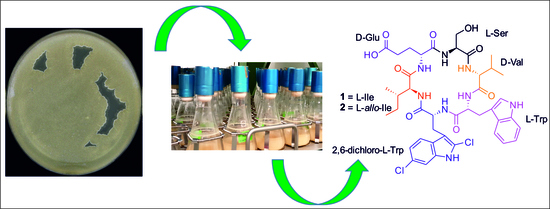Quantity and Quality of Aquaculture Enrichments Influence Disease Epidemics and Provide Ecological Alternatives to Antibiotics
Abstract
Share and Cite
Karvonen, A.; Räihä, V.; Klemme, I.; Ashrafi, R.; Hyvärinen, P.; Sundberg, L.-R. Quantity and Quality of Aquaculture Enrichments Influence Disease Epidemics and Provide Ecological Alternatives to Antibiotics. Antibiotics 2021, 10, 335. https://doi.org/10.3390/antibiotics10030335
Karvonen A, Räihä V, Klemme I, Ashrafi R, Hyvärinen P, Sundberg L-R. Quantity and Quality of Aquaculture Enrichments Influence Disease Epidemics and Provide Ecological Alternatives to Antibiotics. Antibiotics. 2021; 10(3):335. https://doi.org/10.3390/antibiotics10030335
Chicago/Turabian StyleKarvonen, Anssi, Ville Räihä, Ines Klemme, Roghaieh Ashrafi, Pekka Hyvärinen, and Lotta-Riina Sundberg. 2021. "Quantity and Quality of Aquaculture Enrichments Influence Disease Epidemics and Provide Ecological Alternatives to Antibiotics" Antibiotics 10, no. 3: 335. https://doi.org/10.3390/antibiotics10030335
APA StyleKarvonen, A., Räihä, V., Klemme, I., Ashrafi, R., Hyvärinen, P., & Sundberg, L.-R. (2021). Quantity and Quality of Aquaculture Enrichments Influence Disease Epidemics and Provide Ecological Alternatives to Antibiotics. Antibiotics, 10(3), 335. https://doi.org/10.3390/antibiotics10030335







